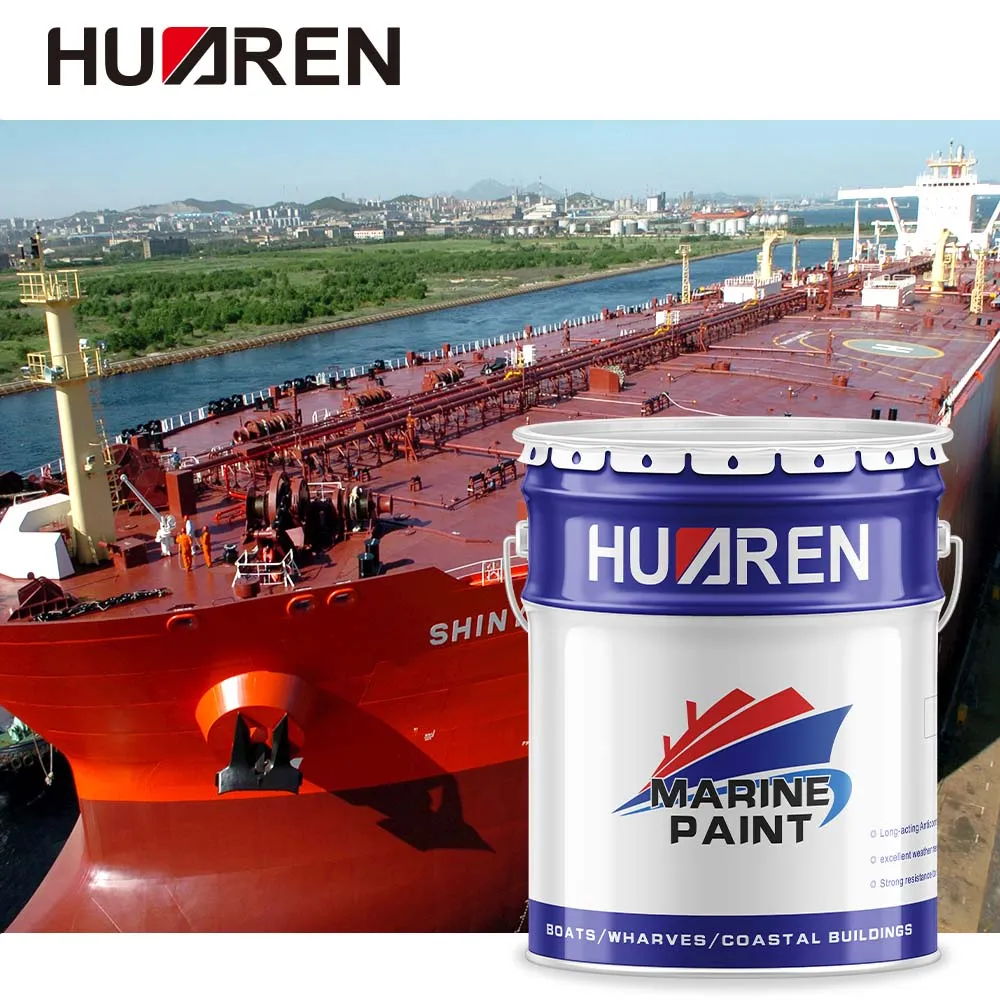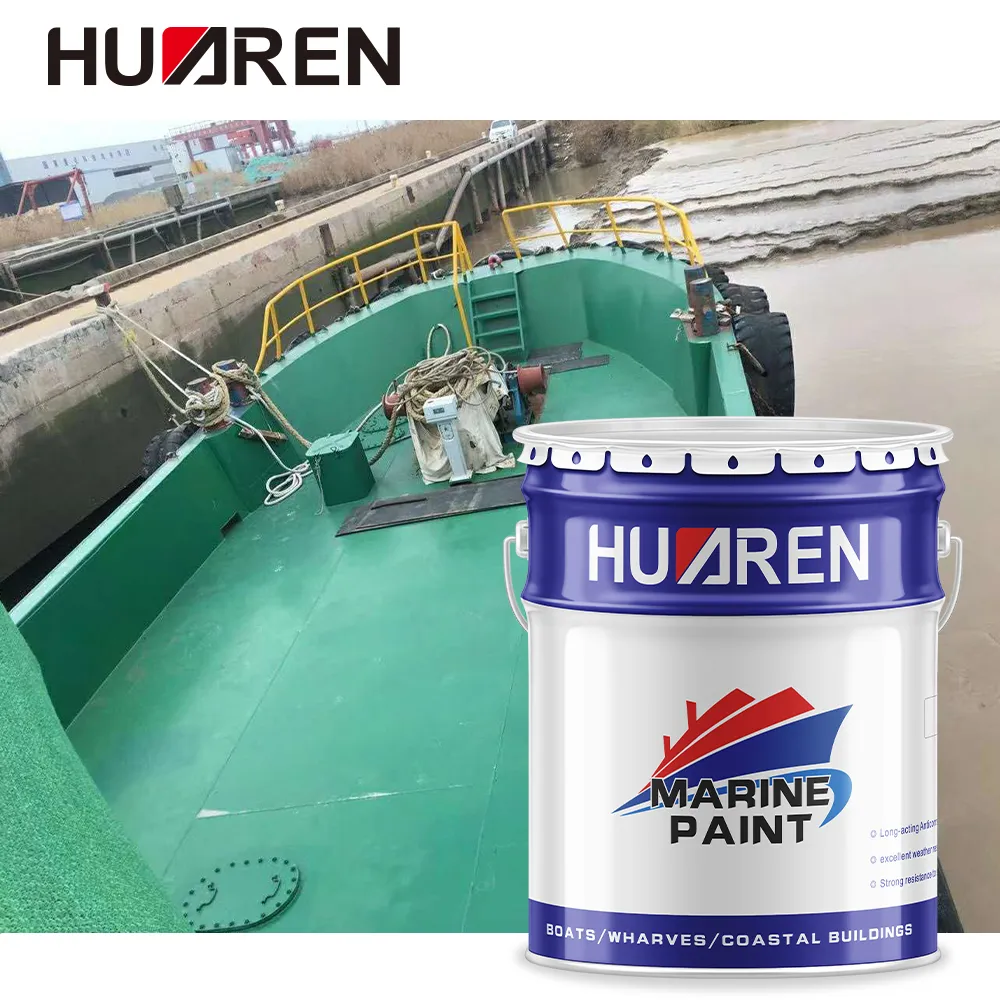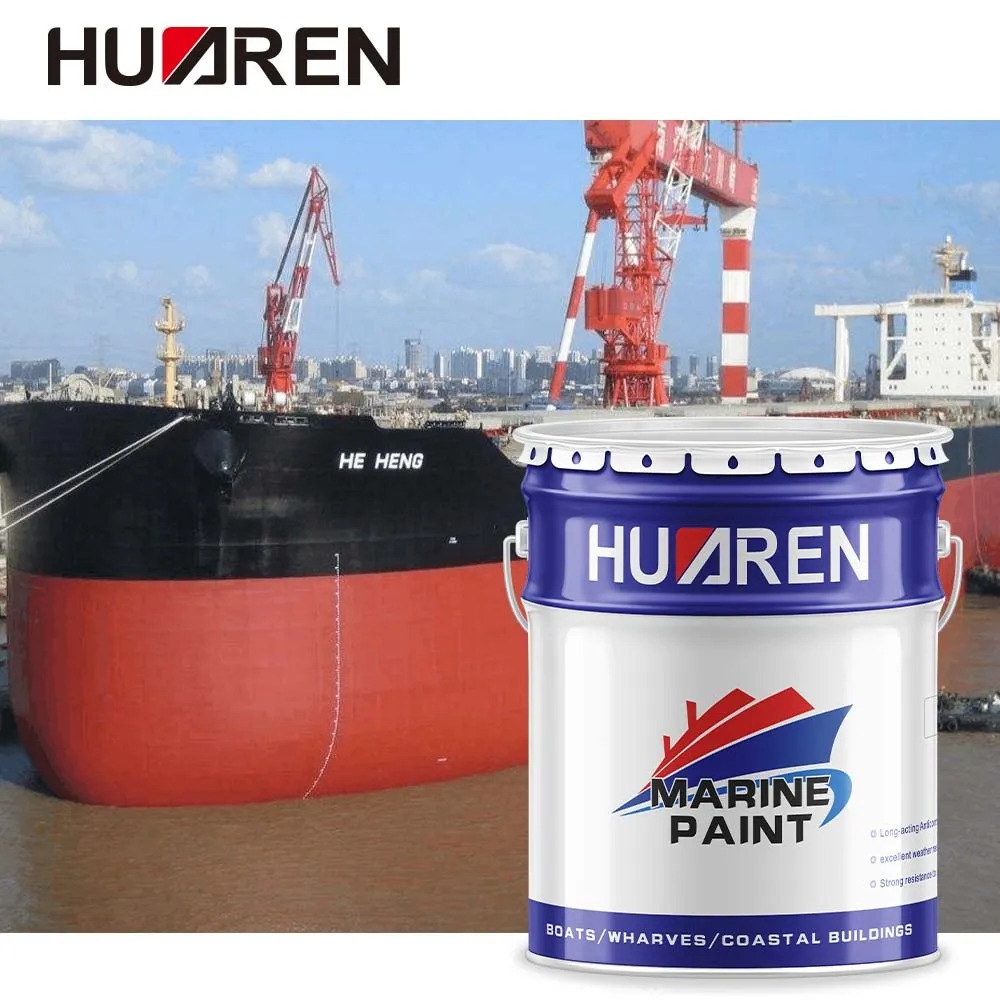Ships, as important carriers of global shipping, fisheries and other marine transportation, their performance and safety are directly related to shipping efficiency, ship service life and environmental protection. In the daily operation of ships, the surface of the hull will be affected by various factors in the marine environment, especially the attachment of marine organisms, which not only affects the appearance of the ship, but may also cause serious economic losses and safety hazards. Therefore, the use of antifouling marine coatings is particularly important.
Antifouling paint is a type of paint used on the surface of ships to prevent marine organisms (such as algae, shellfish, snails, etc.) from adhering to the surface of the hull. These coatings can significantly improve the navigation performance of the hull, reduce fuel consumption, extend the life of the ship, and reduce the negative impact of ships on the environment. With the continuous development of the global shipping industry, more and more ship owners and operators have begun to pay attention to the use of antifouling coatings due to their multiple benefits in improving ship operational efficiency and environmental friendliness.
This article will discuss in detail why antifouling marine coatings are used, analyze the role, working principle, benefits, types and application examples of antifouling coatings, and help ship managers and shipowners fully understand the importance of antifouling coatings in ship operations.

How do antifouling marine coatings work?
The core function of antifouling coatings is to prevent the growth and attachment of marine organisms on the surface of the ship's hull. Microorganisms, algae, shellfish and other organisms in the marine environment attach to the surface of the ship's hull to form biofilms (also known as "biofouling"), a phenomenon that has a huge impact on ships.
1.1 Basic principles of antifouling coatings
Antifouling coatings change the physical and chemical properties of the ship's surface, making it difficult for marine organisms to attach or grow on the hull surface. Specifically, the principles of antifouling coatings can be divided into the following categories:
● Physical barrier effect: Some antifouling coatings use special surface structures to form a slippery surface or coating that hinders the attachment of marine organisms. The surface of this type of coating has low surface energy, which can effectively reduce the chance of marine organisms attaching.
● Toxicity release: Another type of antifouling coating prevents the attachment of organisms by slowly releasing toxic substances (such as metal ions such as copper and zinc). These coatings typically have an inhibitory effect on attached organisms, preventing them from growing and multiplying.
● Self-cleaning function: Some high-tech antifouling coatings use special self-cleaning technology. This type of coating can clean itself through water flow and friction during the ship's movement, reducing the accumulation of biological fouling.
● Biocompatibility: The new environmentally friendly antifouling coating avoids or reduces the impact on the marine ecology by maintaining compatibility with organisms in the marine environment. Unlike traditional paints that contain harmful metals, these paints are more gentle and less harmful to the ecological environment.
1.2 Long-term effects of antifouling coatings
The effect of antifouling paint is usually continuous, and as the ship sails, the paint will gradually form an effective protective layer to prevent the adhesion of biofouling. High-quality antifouling coatings can maintain a stable effect over several years, greatly reducing the frequency of biological attachment and accumulation on the ship's surface.

What are the benefits of using antifouling marine coatings?
The use of antifouling marine coatings has significant benefits in terms of ship operations, fuel efficiency, environmental protection, etc. The following are the main advantages of using antifouling coatings:
2.1 Improving navigation efficiency
When marine organisms attach to the surface of the hull, the surface of the hull becomes rough, resulting in increased water resistance. To overcome this increased resistance, the ship needs to consume more fuel. This situation not only increases the shipowner's operating costs, but also reduces the ship's speed.
After using antifouling paint, the smoothness of the hull surface is maintained, the attachment of marine organisms is greatly reduced, and the hydrodynamic performance of the ship is effectively protected. Ships protected by antifouling coatings can maintain higher speeds while reducing resistance, significantly improving navigation efficiency, reducing fuel consumption, and thus reducing operating costs.
2.2 Reduce fuel consumption
As mentioned above, the attachment of biofouling to the hull surface will increase water resistance and cause the ship's speed to decrease. To maintain the same speed, the ship needs to consume more fuel. Antifouling coatings can effectively prevent biofouling and reduce water flow resistance, thereby significantly reducing the ship's fuel consumption.
According to relevant research, ships using antifouling paint can reduce fuel consumption by up to 10% compared to ships without paint. For commercial ships operating for a long time, this fuel cost saving is very considerable.
2.3 Extending the life of ships
The hull surface of ships that are exposed to seawater corrosion and biological attachment for a long time will gradually be damaged, and may even cause serious corrosion and damage. Antifouling coatings reduce direct contact between seawater and the hull, delay the corrosion process, and protect the metal surface of the ship from erosion by biological fouling, thereby effectively extending the service life of the ship.
2.4 Reduce maintenance costs
Due to the effective protection of antifouling coatings, the attachment of biological fouling on the hull surface is reduced, the cleaning and maintenance of ships becomes easier, and shipowners do not need to perform defouling operations frequently. This reduces the frequency and cost of ship maintenance, while also reducing the workload of crew members and improving work efficiency.
2.5 Environmental Protection
The accumulation of biofouling not only affects the ship itself, but may also have adverse effects on the marine ecological environment. Traditional antifouling coatings often contain harmful metals (such as copper and lead), which can accumulate in the marine environment and cause pollution. Modern environmentally friendly antifouling coatings use a milder anti-fouling method, which causes less harm to the marine ecological environment and meets environmental protection requirements.
The use of antifouling coatings can not only protect ships, but also effectively reduce pollution to the marine environment and ensure the sustainable development of the shipping industry.
What are the types of antifouling marine coatings?
There are many types of antifouling ship coatings. Choosing the right type and formula of coating can maximize the antifouling effect of ships. According to their working principle, composition and environmental protection, antifouling coatings can be roughly divided into the following categories:
3.1 Copper-based antifouling coatings
Copper-based antifouling coatings are the most widely used type. This type of paint uses copper as the main active ingredient, and through the antibacterial effect of copper, it prevents marine organisms from attaching to the surface of the hull. This type of paint has strong anti-fouling properties, but due to the toxicity of copper, some regions have begun to restrict the use of copper-based paints to avoid pollution to the marine environment.
3.2 Non-toxic antifouling coatings
Non-toxic antifouling coatings use environmentally friendly ingredients such as silicone, polyurethane, etc., which are non-toxic and friendly to the marine ecology. This type of coating prevents the attachment of marine organisms by changing its surface properties, thus avoiding the environmental pollution caused by traditional copper-based coatings. In recent years, with the increasing environmental protection requirements, this type of coating has gradually gained favor in the shipping industry.
3.3 Self-cleaning antifouling coatings
Self-cleaning antifouling coatings use special surface technology that enables the coating to automatically remove dirt attached to the surface under the action of water flow and friction. The advantages of this coating are its durability and ease of maintenance, making it particularly suitable for large commercial vessels that sail for long periods of time.

Application and maintenance of antifouling coatings
Although antifouling coatings can significantly improve the performance and safety of ships, their application and maintenance require strict compliance with relevant operating specifications to ensure the effectiveness of the coating.
4.1 Construction technology
The construction of antifouling coatings usually includes steps such as surface treatment, primer application, and main paint coating. First, the hull surface needs to be cleaned to remove all dirt, rust and old coatings. Then, apply a layer of anti-rust primer to provide a good base for the anti-fouling paint to adhere. Finally, professional equipment is used to evenly apply the antifouling paint on the hull surface, ensuring the coating thickness and uniformity.
4.2 Maintenance and care
Maintenance of antifouling coatings mainly consists of regular inspection and cleaning. Since the coating will be corroded by the marine environment during use, regular inspection of the coating integrity and timely repair and re-coating are the key to ensure the long-term effectiveness of the coating.
For premium industrial coatings at affordable prices, Huaren Chemical Industry Co., Ltd. is your go-to supplier in China. Founded in 1994, we operate a state-of-the-art factory with 30 production lines and an annual capacity of over 20,000 tons. Our extensive product range includes water-based industrial paints, epoxy coatings, and phenolic varnishes designed for industries like petrochemicals, construction, and shipbuilding. At Huaren Chemical, we prioritize customer satisfaction by offering competitive quotes, bulk purchasing options, and customized solutions. With exports spanning Africa, Southeast Asia, and Europe, we are committed to delivering high-quality products with fast and reliable service. Contact us today for factory-direct prices and promotional deals.

